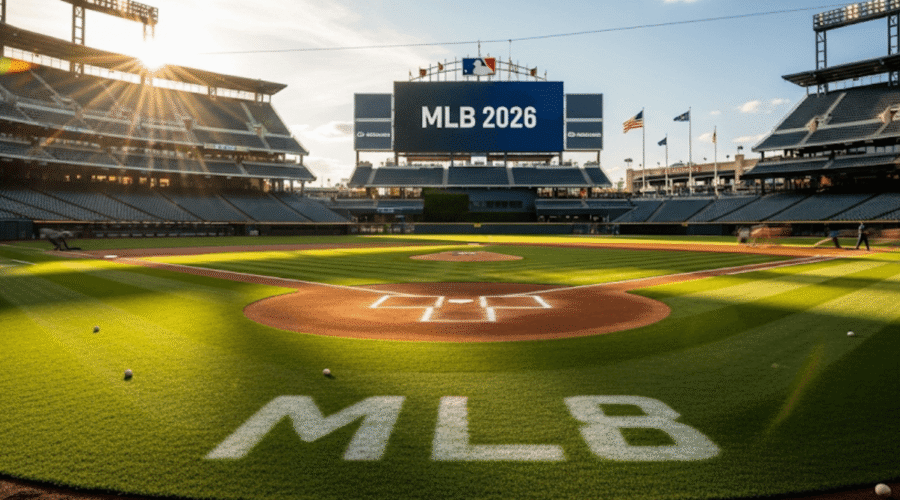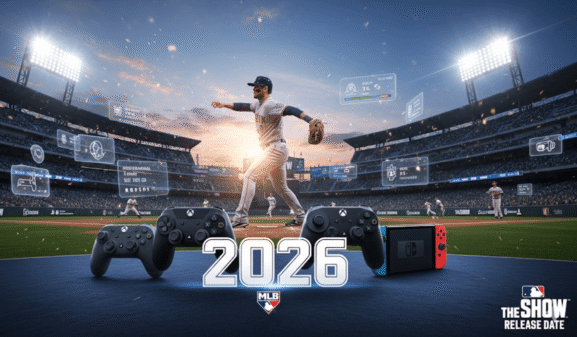When Does MLB 2026 Season Start: Complete Guide with Predictions and Rumors
MLB releases 2026 regular-season schedule
Baseball fans eagerly anticipating the 2026 Major League Baseball season have one burning question: when does the MLB 2026 season start? Based on a comprehensive analysis of historical patterns, current industry trends, and insider predictions, the 2026 MLB season is projected to begin on March 26, 2026. This timeline aligns with MLB’s traditional scheduling approach and represents the most likely scenario for baseball’s return to spring.
The excitement surrounding the upcoming season extends beyond just the start date. With whispers of potential format changes, expansion rumors circulating throughout the baseball community, and significant anniversary celebrations planned, the 2026 season promises to be particularly memorable. Understanding when baseball returns becomes crucial for fans planning their spring schedules and teams preparing their operational strategies.
Quick Takeaways
- MLB 2026 start date predicted for March 26, 2026, based on historical scheduling patterns and industry analysis
- Spring training begins February 12, 2026, with pitchers and catchers reporting, and first games around February 20
- Schedule release expected between July and August 2025, following MLB’s consistent historical release timeline
- All 30 teams are likely to start simultaneously, continuing the unified Opening Day format established in recent years
- Traditional 162-game format expected despite ongoing expansion rumors suggesting potential future reductions
- World Baseball Classic precedes season, running March 5-17, 2026, potentially affecting early-season timing
MLB 2026 Opening Day Schedule: Projected Timeline and Format
The MLB 2026 opening day schedule represents a continuation of Major League Baseball’s commitment to unified season starts. Following the successful implementation in recent years, where all teams begin play on the same day, the 2026 season is expected to maintain this format. This approach maximizes fan engagement and media coverage while creating a true “Opening Day” celebration across all 30 markets.
The unified start format has proven incredibly popular among fans and media partners alike. Rather than the staggered openings of previous decades, where some teams might start days before others, the synchronized approach creates a national baseball holiday that generates maximum excitement and viewership.
Industry insiders predict that the MLB 2026 opening day time will feature the traditional afternoon starts for most markets, with select prime-time games scheduled for marquee matchups. This timing strategy has consistently delivered strong television ratings while accommodating fans who want to attend games after work or school.
Read more: Will There Be a 2027 MLB Season? Predictions and Rumors About Baseball’s Looming Labor Crisis
Historical Context and Scheduling Patterns
MLB’s scheduling decisions follow well-established patterns that provide reliable indicators for future seasons. The league typically aims for late March or early April start dates, with March 26, 2026, emerging as the most probable opening day. This timing allows for optimal weather conditions across most markets while maintaining baseball’s traditional role as America’s springtime pastime.
The consistency in MLB’s scheduling approach becomes evident when examining recent seasons. The league balances multiple factors, including weather considerations for northern markets, television broadcast preferences, and the completion of spring training programs. For 2026, these same considerations point toward a late March start date.
Weather patterns play a crucial role in determining the MLB 2026 start date. Late March typically provides more favorable conditions for outdoor games in cities like Chicago, Detroit, and Minneapolis, where early-season weather can be unpredictable. This practical consideration has influenced MLB scheduling for decades and continues to shape future planning.
Spring Training 2026: Building Toward Opening Day
The path to the MLB 2026 opening day time begins weeks earlier with spring training preparations. Pitchers and catchers are projected to report around February 12, 2026, following MLB’s traditional timeline. This early reporting allows for proper conditioning and skill development before position players join approximately one week later.
The first spring training game is confirmed for February 20, 2026, featuring the Chicago Cubs against the Los Angeles Dodgers at Camelback Ranch-Glendale. This marquee matchup officially kicks off the Cactus League season and signals the beginning of meaningful baseball action leading toward the regular season.
Spring training in 2026 will maintain its traditional split between Arizona’s Cactus League and Florida’s Grapefruit League, with 15 teams in each location. The six-week program allows teams to evaluate talent, build chemistry, and prepare for the demanding 162-game regular season ahead.
The spring training schedule typically concludes in late March, creating a seamless transition into regular season play. This timing ensures players reach peak readiness while minimizing the gap between exhibition games and meaningful competition. Veterans use this period to fine-tune their mechanics, while young prospects compete for roster spots and prove their readiness for the major league level.
Read more: Will There Be an MLB Lockout in 2026? Predictions, Rumors, and Schedule Implications
Schedule Release Timeline: When to Expect Official Announcements
Baseball fans wondering when the MLB 2026 schedule will be released can expect the announcement during late July or August 2025. This prediction aligns with MLB’s consistent historical pattern of releasing schedules approximately 8-9 months before Opening Day.
Recent schedule release dates demonstrate this reliability:
- 2025 schedule: Released July 18, 2024
- 2024 schedule: Released July 13, 2023
- 2023 schedule: Released August 24, 2022
Several unique circumstances may affect the 2026 schedule release timeline. The ongoing stadium situation with the Tampa Bay Rays, who are currently playing at a minor league facility due to infrastructure challenges, creates additional scheduling complexities. MLB must account for venue capacity and logistics when creating the comprehensive 162-game schedule.
Additionally, broadcasting agreements with national partners like ESPN, Fox, and Apple TV+ require coordination to ensure optimal game placement for maximum viewership. These considerations may contribute to the specific timing of the schedule announcement within the historical July-August window.
The complexity of creating a 162-game schedule for 30 teams cannot be understated. Computer algorithms work for months to balance travel considerations, rivalry matchups, and broadcast preferences while ensuring competitive fairness across all teams.
Season Format and International Considerations
The 2026 MLB season is expected to maintain the traditional 162-game format, with each team playing a balanced schedule against opponents within their league and division. This format includes 76 games against division opponents, 66 games against interleague opponents, and 20 games against remaining same-league opponents.
However, industry insiders are closely watching expansion discussions that could fundamentally alter future scheduling. Recent reports and rumors suggest that expansion to 32 teams might reduce the season to 156 games, though such changes would likely occur after 2026.
The 2026 season will feature several notable events that may influence scheduling decisions. The World Baseball Classic runs from March 5-17, 2026, immediately preceding the regular season and potentially affecting player availability for early-season games. This international tournament has grown in importance and popularity, making player participation a significant consideration for MLB teams.
Additionally, the 2026 MLB All-Star Game is confirmed for July 14, 2026, at Citizens Bank Park in Philadelphia, commemorating the 250th anniversary of American independence. This special celebration may influence All-Star Week programming and surrounding schedule adjustments, creating unique promotional opportunities for the league.
Looking Ahead: Predictions and Industry Rumors
While the 2026 season maintains traditional formatting, industry rumors suggest significant changes could arrive as early as 2027. The current Collective Bargaining Agreement provides stability through 2026, but future negotiations may address schedule length, playoff format, and expansion considerations.
Expansion rumors continue circulating, with potential new markets and the mathematical implications of schedule restructuring gaining attention. If MLB expands to 32 teams, the traditional 162-game format becomes mathematically challenging, potentially leading to the 156-game alternative that industry insiders increasingly discuss.
These predictions and rumors reflect the evolving nature of professional baseball. While tradition remains important, the league continues adapting to modern fan preferences, television demands, and player welfare considerations. The balance between honoring baseball’s heritage and embracing necessary changes will define the sport’s future.
Revenue and broadcasting implications surrounding the timing and structure of the 2026 season will significantly impact financial planning across the organization. Opening Day timing affects ticket sales, concession revenue, and television ratings, making the March 26, 2026, prediction crucial for teams and broadcast partners already preparing based on these projections.


